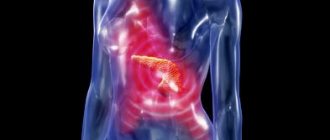Abdominal dropsy and gynecological disorders
Due to the rapidly growing fibroids of the uterine body, the abdomen may also increase. A cyst in the ovaries can weigh more than 3–5 kg. Ascites can cause an increase in the volume and diameter of the abdomen. This is a disease that causes a large amount of fluid to accumulate in the body. To avoid this kind of process, you need to contact specialists in time and not fix the problem yourself.
reasons why women's belly grows
Treatment
Pre-hospital assistance
Independent elimination of abdominal enlargement is possible with constipation and flatulence. In the first case, laxatives are indicated, in the second - carminatives, limiting products that promote gas formation. The frequent occurrence of these conditions is a reason to consult a gastroenterologist. Other cases of abdominal enlargement, with the exception of nutritional obesity, require urgent diagnosis and treatment by a specialist. In case of sudden development of ascites or intestinal obstruction, it is necessary to call an ambulance.
Conservative therapy
Patients with diseases of the digestive tract are prescribed a special diet. The drug therapy regimen is determined by the nature of the pathology:
- Liver diseases
. Hepatoprotectors, enteroseptics, and agents for normalizing intestinal microflora are used. - Conditions with portal hypertension
. ACE inhibitors, beta-blockers, nitrates, glycosaminoglycans are recommended. - Pathologies of the stomach and intestines
. The list of medications includes enzymes, drugs for restoring microflora, motility regulators, adsorbents, and laxatives. - Gynecological diseases
. For many diseases, including cysts, hormonal drugs are effective. Patients are also prescribed vitamin therapy. - Cardiovascular diseases
. They use antihypertensives, nitrates, diuretics, antiarrhythmics, beta-blockers, antiplatelet agents, and cholesterol-lowering drugs. - Endocrine disorders
. Hormone therapy is indicated. - Oncological diseases
. In some cases, medications from the group of cytostatics are required.
For some non-tumor pathologies, drug therapy is supplemented with physiotherapeutic procedures: acupuncture, balneotherapy, electrical stimulation. In case of tumor processes, along with chemotherapy, radiation therapy may be prescribed.
Surgery
For ascites of any origin that is resistant to conservative therapy, laparocentesis is performed. During one procedure, no more than 5-6 liters of fluid are removed from the abdominal cavity. Massive ascites is an indication for placement of a peritoneal catheter. To eliminate the causes of abdominal enlargement and combat complications that arise, the following interventions are performed:
- Liver diseases
: operations for liver cysts, various resection options, tumor enucleation, drainage and elimination of bile duct strictures. - Portal hypertension
: endoscopic ligation, sclerosis of dilated veins of the esophagus, portocaval, mesentericocaval and selective splenorenal shunting, embolization of the splenic arteries. - Intestinal diseases
: elimination of intestinal obstruction, dissection of adhesions, intestinal resection, hemicolectomy, total colectomy, removal of diverticula. - Extraorgan tumors of the abdomen
: excision of the mesentery, omentectomy, peritonectomy, removal of extraorgan formations. - Gynecological pathologies
: removal of paraovarian cyst or ovarian cystoma, removal of ovarian cyst, ovarian resection, oophorectomy or adnexectomy, uterine amputation, hysterectomy or panhysterectomy. - Endocrine diseases
: removal of an adrenal tumor.
Nature ordered it this way
Representatives of the fair sex are 4 times more likely to be overweight, and all because their percentage of body fat is a priori one and a half times higher. Among other things, during the period of bearing a child and breastfeeding, almost every woman’s weight increases. This means that if a woman has not returned to her original shape after her first pregnancy, during subsequent pregnancies her weight will only increase, which will lead to obesity. If a woman initially had a tendency to be overweight, we can give a 99% guarantee that she will suffer from obesity in the future.
why does a woman have a big belly
Excessive exercise
Abdominal volume can also increase when a person exhausts himself with training and does not consume the required amount of calories. In this case, the body has to store fat. It often happens that we convince ourselves that everything we ate before can go away thanks to training. Indeed, you can pump up your abdominal muscles and increase them at the waist, but not at all on your stomach. This phenomenon is a feature of men.
Thus, to reduce belly fat, a woman needs to carefully monitor her diet and exercise routine. And it is worth noting that the most effective are basic strength exercises. Now you know why women's belly grows .
Why does the abdominal volume increase?
Weight gain
Abdominal volume often increases with preobesity and obesity, which can be caused by hereditary predisposition, overeating, lack of mobility, endocrine diseases, and side effects of certain medications. The symptom is pronounced in people with abdominal obesity, to some extent it is present in patients with mixed obesity, and less so in patients with gynoid obesity.
Physiological conditions in women
A slight increase in the abdomen is often observed in teenage girls and is associated with hormonal changes in the body. Many women note the cyclical appearance of the symptom shortly before the onset of menstruation, especially if they have premenstrual syndrome. The onset of menopause is often accompanied by weight gain and, as a result, fat accumulation.
In women of fertile age, an increase in abdominal volume is one of the signs of pregnancy. On average, external changes become clearly visible from 15-16 weeks. Early onset of symptoms, too rapid growth in volume during gestation may be a consequence of body composition or individual metabolic changes against the background of hormonal changes, indicating a multiple pregnancy or polyhydramnios.
Secondary changes
Ascites develops in various gastroenterological, gynecological, endocrinological, oncological, cardiological, urological, and rheumatological diseases. The amount of fluid in the abdominal cavity increases quickly or gradually. The patient notices an increase in abdominal volume. Heaviness, bloating, pain, flatulence, nausea, belching, and heartburn occur.
A characteristic sign of the pathological condition is considered to be a change in the configuration of the anterior abdominal wall when the body position changes: in a vertical position the stomach sags, in a horizontal position it flattens out. Sometimes ascites is part of anasarca, a syndrome in which, along with the accumulation of fluid in the abdominal cavity, hydrothorax, hydropericardium, and generalized edema of the subcutaneous tissue are detected.
Abdominal compartment syndrome is a consequence of increased intra-abdominal pressure. Develops after operations, with severe diseases and damage to the abdominal organs, and less commonly with other pathological processes. It is characterized by a deterioration in the patient's condition, an enlarged abdomen, tension in the muscles of the abdominal wall, oliguria, breathing problems, and increasing multiple organ failure. Requires urgent surgical intervention.
Hepatomegaly
Hepatomegaly is rarely accompanied by a visible increase in abdominal volume. As a rule, asymmetric bulging is detected with large-sized formations. The causes of symptoms in liver damage are:
- Cyst.
Noticeable asymmetry is detected with giant cysts. External changes are increasing gradually. Upon palpation, a painless tight-elastic fluctuating formation is determined. - Polycystic.
A hereditary disease characterized by the formation of a large number of cysts. Diagnosed after 40 years. Palpation of the liver is lumpy, sometimes superficial cysts can be felt. - Benign tumors.
Adenomas, hemangiomas, cystadenomas, fibromas, lipomas, fibroadenomas can form in the liver. Abdominal volume increases slowly over several years. - Malignant neoplasia.
Primary or metastatic liver cancer, sarcoma, hepatoblastoma, angioblastoma, and other malignant tumors are characterized by rapid growth.
Increased abdominal volume with ascites
Other liver diseases
Along with hepatomegaly, the cause of an increase in the volume of the abdominal cavity in liver diseases can be ascites, which occurs in the later stages of the disease. The accumulation of fluid is accompanied by the following pathologies:
- Alcoholic cirrhosis.
Develops against the background of alcoholic liver disease in people who abuse alcohol. - Primary biliary cirrhosis.
A disease of unknown etiology with a hereditary predisposition. - Secondary biliary cirrhosis.
Liver damage due to bile duct obstruction. - Liver cirrhosis in children.
It is observed in congenital anomalies of the biliary tract, hereditary disorders of bilirubin metabolism, congenital and acquired hepatitis. - Chronic viral hepatitis.
Ascites is detected in long-term severe cases, indicates the development of widespread fibrosis and cirrhosis, and is more often found in hepatitis D. - Toxic hepatitis.
It is observed in cases of poisoning with benzenes, tetrachloride hydrocarbons, arsenic, and poisonous mushrooms.
In addition, an increase in the abdomen due to fluid accumulation is determined by circulatory disorders in the liver:
- Portal hypertension.
It manifests itself as dyspeptic disorders, hepatosplenomegaly, persistent ascites, dilatation of the saphenous veins of the abdomen in the form of a “jellyfish head”. - Peliosis of the liver.
Before the development of portal hypertension, it is asymptomatic, then the same symptoms appear as in the previous case. - Veno-occlusive liver disease.
It is more often observed after bone marrow transplantation, occurs acutely, is characterized by intense pain in the right hypochondrium, progressive ascites, and blood clotting disorders. - Budd-Chiari syndrome.
It is caused by obstruction of the liver veins. Accompanied by severe pain, nausea, vomiting, ascites, and moderate jaundice. - Portal vein thrombosis.
A polyetiological condition, most often detected in patients with cirrhosis. Ascites is typical for the stem form of the disease. - Pylephlebitis.
Occurs with bacteremia against the background of inflammatory processes in the abdominal cavity (appendicitis, cholecystitis, pancreatitis), sometimes provokes portal hypertension and ascites.
Bowel diseases
With intestinal pathologies, the increase in volume can be acute or gradual, permanent or transient. Determined in the following cases:
- Chronic constipation.
The symptom appears as a result of the accumulation of gases and feces during a long break between bowel movements. It is mildly expressed, accompanied by bloating, pain, a feeling of heaviness, and disappears after bowel movement. - Flatulence
. Occurs as a result of ingestion of certain foods, infectious and non-infectious intestinal diseases. The volume of the abdomen increases for a short time, the increase is more disturbing in the second half of the day, and disappears after defecation. - Diverticular disease of the large intestine.
It is often asymptomatic and may be accompanied by periodic spasms. Patients' abdomen increases with a tendency to constipation. - Megacolon.
Congenital or acquired enlargement of all or part of the colon. More often chronic, manifested by progressive constipation, bloating, thinning of the abdominal wall, visible peristalsis. - Pseudomembranous colitis.
Severe intestinal inflammation due to dysbiosis caused by taking medications. Accompanied by an increase in the case of megacolon formation. - Intestinal paresis.
Develops during intra- and retroperitoneal inflammatory processes and some other pathologies. The increase in volume is associated with bloating, gradually increases, and correlates with the severity of the disorders. - Intestinal obstruction.
Asymmetry, bloating, visible peristalsis, unbearable pain, nausea, and vomiting are detected. - Ulcerative necrotizing enterocolitis.
A life-threatening disease of newborns, in which there is overdistension of the intestine, intestinal obstruction. - Colorectal cancer.
The symptom is explained by flatulence or intestinal obstruction.
Diseases of the upper gastrointestinal tract
In diseases of the stomach, this manifestation is observed less frequently than in intestinal pathologies. One of the possible reasons for the increase in volume is acute dilatation of the stomach. The pathology develops suddenly. The upper parts of the abdomen enlarge, the lower part, the iliac regions look sunken. Sharp pain, nausea, hiccups, uncontrollable vomiting, and dehydration are noted. In patients with gastrointestinal tumors, the symptom is directly related to an increase in neoplasia or ascites.
Eosinophilic gastritis may be accompanied by a visual change in volume as the inflammatory process spreads to the small intestine. The abdomen becomes bloated and, at the same time, flabby due to ascites. Other signs include nausea, heartburn, vomiting, asymmetry, and a feeling of fullness in the epigastric and mid-abdominal cavity.
Other abdominal tumors
The cause of the symptom is the growth of a tumor or the development of ascites. Changes are provoked by the following neoplasias:
- Tumors of the spleen.
Asymmetry with an increase in the volume of the left upper quadrant is observed in large formations. Patients are concerned about a feeling of heaviness in the left hypochondrium, pain, loss of appetite, weakness, weight loss. - Benign tumors of the peritoneum.
They are asymptomatic for a long time; when they reach a large size, they cause asymmetrical enlargement of the abdomen. - Intra-abdominal lymphangioma.
The abdomen often enlarges in children. The tumor is painless, there are no other manifestations. - Peritoneal mesothelioma.
Malignant neoplasia progresses rapidly, the cause of the symptom is ascites or intestinal obstruction. - Peritoneal carcinomatosis.
Multiple lesions in the peritoneum appear secondary to neoplasms of other organs. An increase in volume is formed due to ascites, which is often the only sign of pathology.
Women's diseases
The diameter of the abdomen changes in the presence of space-occupying formations. Most often, the symptom is a consequence of Meigs syndrome, a special form of polyserositis. Benign tumors and tumor-like processes that cause an increase in volume include:
- ovarian cyst (usually dermoid);
- ovarian cystoma (pseudomucinous, papillary);
- paraovarian cyst;
- Brenner tumor;
- mature ovarian teratoma;
- other benign ovarian neoplasia.
The list of malignant neoplasms with the development of ascites or polyserositis includes:
- adenocarcinoma of the uterus;
- fallopian tube cancer;
- ovarian carcinoid;
- immature ovarian teratoma;
- granulosa cell tumor of the ovary;
- metastatic ovarian cancer;
- Krukenberg metastasis;
- germ cell tumors.
Pathologies of the heart and blood vessels
Anasarca occurs in patients with heart failure caused by the following diseases:
- severe angina;
- condition after myocardial infarction;
- dilated cardiomyopathy;
- congenital and acquired heart defects;
- arterial hypertension.
Childhood diseases
In pediatric patients, the cause of increased abdominal volume is:
- Kwashiorkor is a severe malnutrition caused by protein starvation. An enlarged abdomen contrasts with thin limbs, swelling is detected.
- Hunter syndrome is a hereditary metabolic disorder. The symptom is combined with growth retardation, osteoarticular changes, macrocephaly, and mental retardation.
- Cholestasis of the newborn is a polyetiological condition. Accompanied by impaired outflow of bile, jaundice, secondary hepatomegaly, manifested by a slight enlargement of the abdomen.
In addition, in children, the symptom can be observed with cardiomyopathy, congenital hepatitis, and cirrhosis of the liver.
Endocrine pathologies
The list of endocrine diseases with abdominal enlargement includes:
- Metabolic syndrome.
It is a combination of diabetes mellitus, obesity, hypertension and coronary artery disease. - Myxedema.
Develops with severe hypothyroidism. Swelling is more noticeable in the upper half of the body, spreading to the abdomen in severe cases of the disease. - Incidentalomas.
Hormonally inactive adrenal tumors may not manifest themselves until they reach large sizes and cause an increase in abdominal volume.
Other reasons
Other provoking factors are some venous diseases and infectious pathologies. With thrombosis of the splenic vein, the enlargement of the abdomen is explained by ascites. In patients with visceral leishmaniasis, the symptom occurs against the background of edema, ascites, and hepatosplenomegaly.
Abdominal volume measurement










